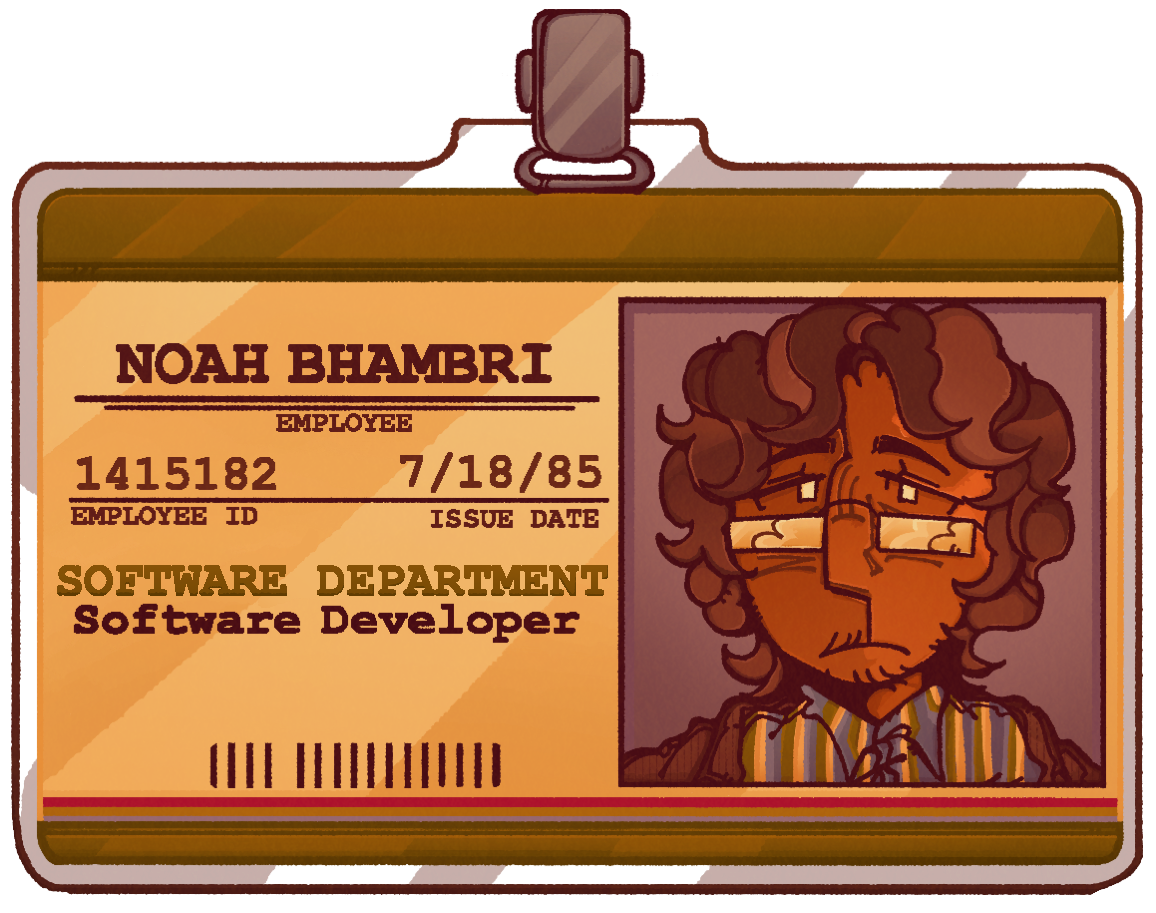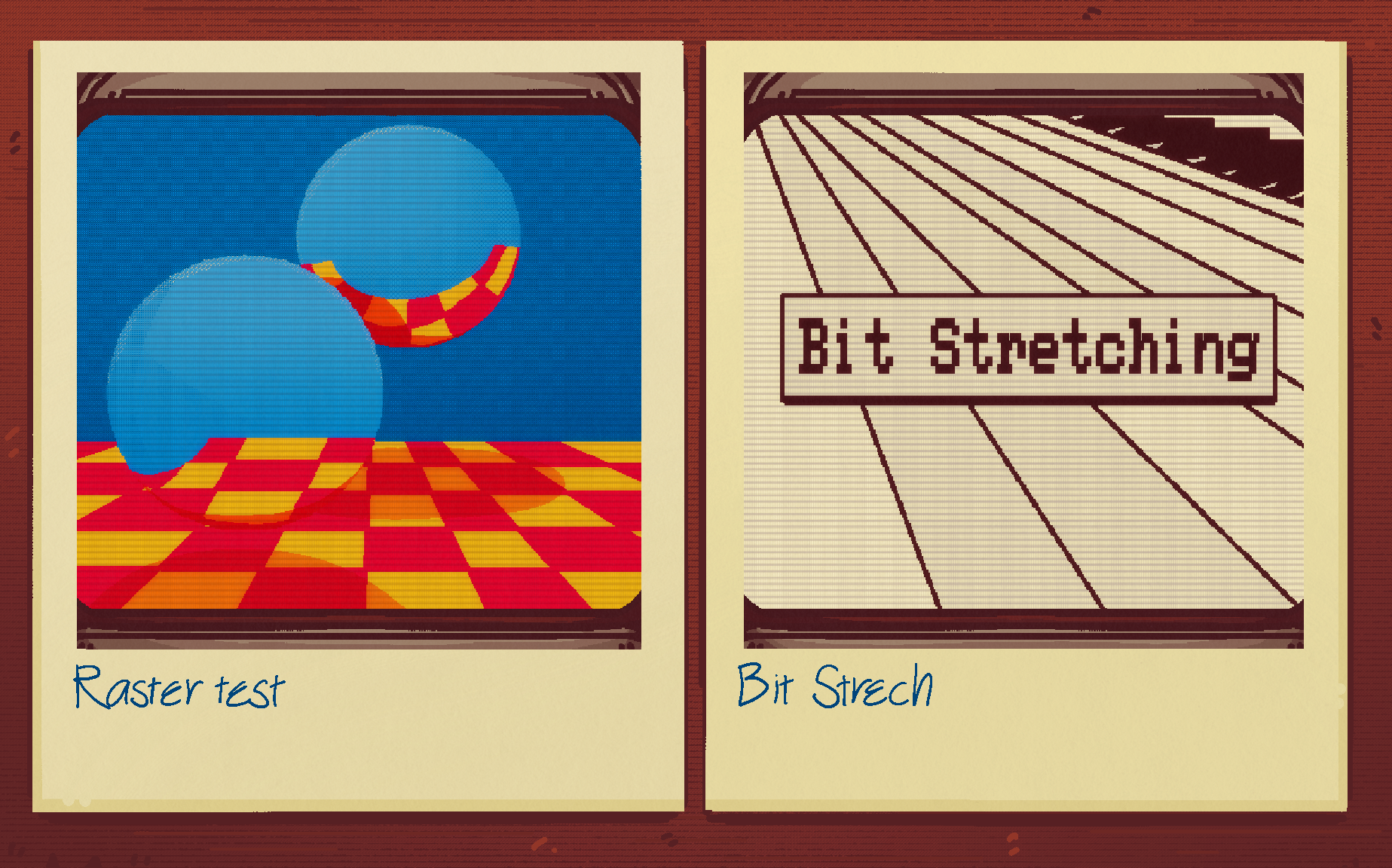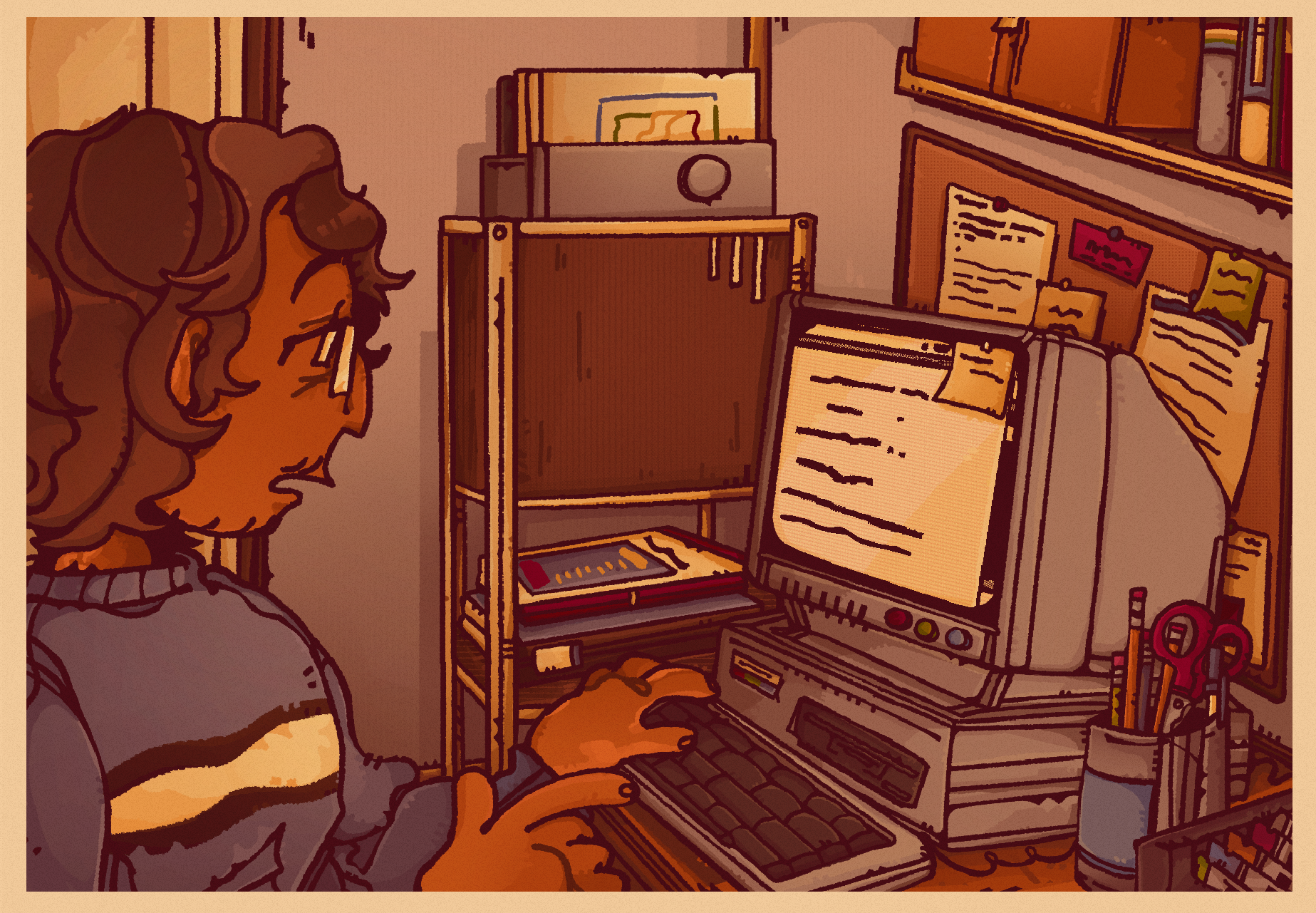An Interview
With Software Developer,
Noah Bhambri.

Bhambri's work ID from Conduit.
Q. What were you doing before your time at Conduit?
A. College, like most of the folks at Conduit. I was still living in Indiana at the time, attending ISU. I had wanted to be a PA for the longest time, but I kept seeing things about the programming field that I found it slowly pulling me in. Was a tough time entering the field by the mid-80s though. More people were enrolling than people who could actually teach the subject. I managed fine enough, sometimes I'd get overwhelmed by the workload, but it sure beat taking classes for 6 years.
Q. How did you first hear about Conduit?
A. If you were getting into computers in the early to mid-80s, you sort of had some knowledge of their products due to the Conduit I. I never had a model myself, but I had a handful of their smaller products since a friend of mine had recommended their expansion cards.
Q. How did you come to work at Conduit?
A. I was 22 and moving to New York for work. The tech business was split between California and the Big Apple, and I thought moving to New York was going to be less of a hassle than traveling across the country to work in Silicon Valley. I saw that Conduit was looking for programmers through the newspaper, and I decided to take it. There were definitely better opportunities to pursue, but working at a shiny new tech start-up was the big trend at the time.
Q. What did your job as a programmer at Conduit entail?
A. Well, it depends. When I started working there in, around the fall of 1986, it meant being a coding assistant. I'd helped clean some programs up, test out applications, and sometimes I'd be asked to help with writing code for some piece of software they were planning on releasing or adding to the Conduit II machine they were (supposed to be) finishing up. I found the work pretty easy and mindless to do, sort of meditative.
When the computer first got delayed that winter, then my role started to change. From 1987 to late '88, I was brought onto the project to fully design software for the machine, along with reworking existing code to be more up-to-date, and still be expected to perform all my previous tasks and then some. If you knew it, you did it. That was the motto of our department.
Q. Were other departments the same?
A. Not exactly. I think all the people working on the project were being pushed pretty hard, but not to the same extent that we were. I know the folks down in engineering had to keep redesigning parts just to keep up with the constant changes we kept making in software.
Q. Was the company's focus only on the development of the Conduit II by 1987?
A. For the most part, yes. They put out some smaller products like they were back in the early 80s, just to have something on the shelves as production on the PC kept stretching on.
Q. What did they code the Conduit II on?
A. Some people higher up were working on the few Conduit II prototypes they managed to manufacture, but the rest of us were coding on the Conduit I. How it basically worked was that less demanding programs were coded on the older machine, and the ones that pushed the system more were being done on prototypes.
Q. Do you know what happened to those prototypes once the company went bankrupt?
A. Most of them stayed in the hands of employees, from what I know. I had managed to get a hold of a model in the late 90s from someone from the company and took it with me to the tech shows I was doing then. I think I had handed it off to a friend who worked there too, but it’s been 30 years and things travel so who knows where those things wound up.
Q. What was the goal of the Conduit II in terms of software?
A. Push the computer as hard as it could be pushed. It was going to be mostly used in office spaces, so they wanted to focus on the PC’s ability to multitask and have multiple programs opened at once with no slowdown. It was supposed to be able to handle displaying fully colored photographs and 3D renders, along with a whole other list of things. The specific applications they wanted to get on the computer were always changing, but the goal of pushing it as far as it could go stayed the same during the entirety of its development.
Q. They being?
A. Higher-ups. Mostly the head of our department, Guzmán. His vision for the machine kept changing month to month and sometimes we'd have to scrap whole finished applications just to go back to them months later and code them from the ground up again. That whole process is what kept causing the release date for the PC to keep getting pushed back over and over again.
Q. How long was the Conduit II in development?
A. They had started piecing together the concept for it in 1985, just a little before I had gotten there. It was originally scheduled to be released in the winter of the next year, then it kept getting delayed all the way up to 1989. So it was stuck being worked on for around 4 years, roughly.
Q. What programs did you develop for the Conduit II?
A. With how things worked, I had a hand in most of the applications on the PC. But in specific, I mostly worked on the graphics for the PC, along with developing the graphs program for the workspace suite that made it onto the finished product.

An image Noah had provided me of his work.
"When I couldn't make it in at work, I would take photos of my at-home work for progress." - Noah Bhambri.
Q. What applications were completed before the Conduit II was canceled?
A. Almost all of them. We didn't get the time to tighten up the bells and whistles, but it was decided that the PC was ready enough to hit store shelves. Didn't get the chance too with Guzmán's sudden departure right at launch. The two other founders of the company couldn't go on with the presentation for the shareholders since he had the most finished version of the PC at home with him.
Q. Do you think the Conduit II would've been successful if it wasn't canceled?
A. Depends. If it had been released on its original release date in 86? I think it would have, especially with what the computer was capable of doing. But by 1989? It would've been seen as underwhelming by launch. It was a powerful machine sure, but with how fast the industry was moving during the time, it would've been outdated on release.
Q. Do you know why Guzmán had left the project?
A. No clue, but it wasn't surprising. He made it pretty apparent that the project was stressing him out with how he would constantly be late to work or not show up at all for stretches of time. The days he did show up, he always looked like he was going to start going gray. I think the common assumption was that it all got too much for him, so he completely dropped it and left.
I always thought it was pretty weird. Even with how stressed the project seemed to be making him, he was probably the person who was the most dedicated to it being finished. After he left, he just seemed to fall off the face of the earth. He was already pretty reclusive, so I wouldn't be shocked if he just never wanted to deal with the limelight again after Conduit turned into a massive failure.
Q. How long did you work at Conduit?
A. Three years. They started laying off folks in late 1988 and I got the notice sometime after the Conduit II got canceled that I should start looking for work elsewhere.
Q. To wrap things up, do you have any other memories of your time at Conduit that you'd like to share?
A. During my second year at Conduit, I had just started dating the woman who would soon be my wife and we were both hanging out at my apartment for the day. I wanted to try to impress her, so I showed her some of the programs I had done for Conduit. It's funny in retrospect, to show someone your boring coding job to impress them, but I remember her finding my interest in it all very admirable.

A photo of Noah explaining a program he coded to his wife [offscreen].
She had snuck out the camera she had in her purse and quickly took a photo of me. I had been so embarrassed at the time, but I'm glad she did, looking back.